October the 2nd is a day making history in Mexico. Mexicans look at it with disgust and sadness, adding one painful memory to the national feeling.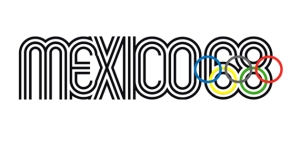
1968 was the year of worldwide awakening and cultural revolutions led by students and social activists, and Mexico was not the exception. It was also the year in which the Olympics were held in Mexico, where the eyes of the world were pointing to the country.
During the previous years, many social activists and unions started to strengthen due to the corruption and repression of the Government.
The then President of Mexico, Gustavo Díaz Ordaz, used his power to strengthen his authority with extremely repressive measures, dissolving strikes by force, shutting newspapers down and even forbidding trends that are “against good manners”, such as the use of miniskirts. His delirium of power and control were too far.
1968 arrived and with it the Human Right movements worldwide gained attention. At the same time, the euphoria of the Olympics was present in the national Universities with their corresponding sport clubs. People were living that excitement in and out of the field.
On July 22nd, two American football fan groups of the National Polytechnic Institute (IPN) had a discussion that ended up in a public fight. In order to stop the fight, a group of riot policemen entered the campus (where the Stadium was) to dissolve it and to arrest many students through brutal measures, beating everyone and abusing their power inside the facilities, even destroying them.
Seeing this violent behavior of the authorities, the major Universities of the city (and the most important ones of the country) stopped their labors the following week. The student unions and professors go on strike from July the 29th demanding the destitution of Mexico City’s Head of Police and the dissolution of the riot police.
That same evening the student unions march towards the central square of the City known as “Zócalo”, where the Government’s offices are, but they are attacked again by the riot police, this time with more brutality beating equally protesters and pedestrians.
More than 500 people are arrested, including foreign tourists that were just walking by, and the future president Ernesto Zedillo.
At night the Head of Police orders the apprehension of the “responsible persons of disorders” (according to them). With this, the police arrests the communist and socialist party members, left-wing journalists and student union leaders.
The next day the police has word that some leaders are hiding inside the National Preparatory School. They attack the facilities with bazookas, destroying art from century XVIII that was part of the building. This brutal attack is publicly seen by the population, who is now aware of the obvious governmental repression.
On August the 1st the rector of the National University (UNAM), Javier Barros Sierra, publicly condemns the attack to the Preparatory, demands the release of the political prisoners and heads a march through the city with the slogan “¡Únete Pueblo!” (“People, unite!”.)
The National Council of Strike (CNH – Consejo Nacional de Huelga) is created a week later to represent the demands of up to 75 institutions. During August the protests increase and become stronger adding members of the railroad workers union, national healthcare employees union, peasant communities and many others.
The Government tries to have an agreement on August the 22nd and sets a meeting with the leaders of the CNH through the Secretary of Government, Luis Echeverría, but he later calls it off, as the students wanted to make it public, and not behind closed doors as Echeverría desired.
On August 27th around 30 000 people march towards the Zócalo again and protest in front of the National Palace (the office of the President of Mexico).
There is no response and late night most people finish the protest, while some others hoist a black and red flag on the central square, where the Mexican flag was supposed to be.
One of the student leaders, Sócrates Campos Lemus, suggests to stay until they get an official response from Presidency. Most of the CNH leaders with another 3500 students stay all night there. On early morning of the next day 3 military battalions, 4 firemen squads, 200 police teams and 4 battalions of the anti-riot local police raid the camp where the students were sleeping and destroy everything with the infantry tanks.
The students are then chased through many streets and most leaders are captured too. Sócrates Campos is later revealed to be an infiltrated agent of the Government.
But again, the next day, bureaucratic employees of the City Government hoist the black and red flag on the Central Square and call for more demonstrators to support the student movement.
Hours later many buses rented by the Government arrive to the Central Square and several governmental employees descend to protest against the student supporters, but they suddenly change their cry and start to support the students too.
More students gather at the Zócalo and the movement regains its power. At this point the doors of the National Palace open and the army goes out to spread the demonstrators, and some shoots from the Government offices are registered against the escaping mob.
The student movement joined forces with other unions and marched repeatedly in the City during September with some memorable walks like the “Silent March”, where the demonstrators walked with handkerchiefs in their mouths and holding their banners in complete silence.
On September 18th the army surprisingly invades “Ciudad Universitaria”, the National University Campus, where the Olympics were supposed to be inaugurated, because the Olympic Stadium is inside the campus. Five days later the rector of the University resigns and joins the student movement.
The same day police squads dressed as civilians shoot at a building of the Preparatory with machine guns to intimidate the students and professors. The students take control of some buses and park them around “Casco de Santo Tomás”, the place where the IPN has its main facilities.
Around evening circa 1500 anti-riot policemen arrive at the Casco and attack the students inside. After a long shooting, the policemen enter and arrest 350 students inside.
While the army invades the campus of the UNAM, the police occupies the facilities of the IPN. “Batallón Olimpia”, a special undercover squad originally created to protect the Olympic area, is now used to spy on and confront the rest of the students in the city.
With their faculties taken and the Zocalo protected by the army, the CNH and the unions start to gather at Tlatelolco square for their open meetings.
This square is also called “Plaza de las tres culturas” (Square of the three cultures), because is a big square surrounded by an ancient Aztec site at the West, a colonial catholic monastery at the South and a contemporary apartment building at North and East.
Surprisingly the army and the police move out of the taken faculties on October the 1st.
October the 2nd started without problems. As planned, the protesters walked without resistance from different points in the city and gathered in Tlatelolco Square, which was now surrounded by the army and the federal police. There, the remaining student leaders addressed the crowd from a balcony in the apartment building, while the Batallón Olimpia, dressed as civilians and wearing white gloves, took place above and below the student leaders.
Close to 18:00 the meeting was ending and the crowd started to organize and move to the next rally at Casco de Santo Tomás, but one of the leaders announced the cancellation of the march to avoid any conflict with the army.
Ten minutes later a helicopter flying above the square shot green and red flares.
From the surrounding buildings and the convent many snipers, members of the Batallón Olimpia, started shooting at the crowd and at the army; this with the intention to lull the people into believing that the students were shooting.
Then machine guns sounded around the square. People ran in all directions faced with confusion. People in shock froze and the turmoil worsened the situation. Bodies started to fall all over the place.
The student leaders at the balcony saw the incredible image of the people hitting ground below them and tried to calm them down.
“Don’t run! They’re blanks!” yelled some from balcony, but people were dying down there. Suddenly the members of Batallón Olimpia reached the students at the balcony, arrested them and handed them over to the army.
On the square people ran away from the army, who was shooting everyone indiscriminately. The snipers at the buildings kept shooting even at the soldiers. The army shot back to the apartments.
The doors of the convent remained closed and nobody is allowed to enter. People ran to hide within the hallways of the buildings but were captured by the Batallón.
Bodies kept piling up on the square. Some wounded, some death.
Students hid inside some apartments that quickly took them, but the army went door to door after them.
Children, women and men were hunted down by the army, while the shooting decreased slowly into the black night and the advance of military tanks and trucks was the only sound in Tlatelolco.
Wounded students lying on the square were taken to nearby hospitals under the protection of the federal police. Some bodies just taken to the local morgue. The rest are carried on garbage trucks to unknown destinations.
The square has only shoes at night. Some soldiers pick them up to finally clean the area.
National and international journalists are arrested, their belongings taken and their cameras destroyed. Some are also beaten down when tried to defend, including the renowned Oriana Fallaci (who was shot three times and left for dead).
The students are beaten and humiliated by the army, then taken to the area between the convent and the apartments.
The cleaning of the square was slowly done, in order to differentiate the wounded among the dead. Arrested students were put in different jails of Mexico City and the leaders in the “Lecumberri Palace”, the penitentiary were the worst delinquents were imprisoned at that time.
During the following days, the square was cleaned by the fire department and overseen by the army during a week.
Members of the Batallón Olimpia entered into the apartments disguised as water service workers to arrest students and anyone helping them to hide.
The protesters were finally silenced with bullets. The people that could escape wanted to see the report about it in the news. “Today was a sunny day”, said the news anchor of the main TV Network.
A couple of newspapers reported the massacre the following day but didn’t give any number of victims. Just “countless”.
The days after the bloodbath were quiet in the city. No demonstrations nor accusations were made. There were no students nor protesters on the streets.
The athletes from all countries arrived to the capitol and nobody dared to speak about it.
The international press didn’t record any account of it. News about the movement were given mouth to mouth, as the mainstream media in Mexico didn’t want to mention anything about it.
The official report of the Government stated that “the attack of the students in Tlatelolco left 20 students and 1 soldier dead”. The main newspapers blamed entirely the students and defended the Government.
Ten days later, on October the 12th, the president of Mexico, Gustavo Díaz Ordaz, inaugurated the XIX Olympic Games with the name of “The Olympics of Peace”.
The real number of murdered people remains unknown. Hundreds didn’t come back home. Nobody has been condemned, and there isn’t an apology from the Government.
Left-wing or right-wing, October the 2nd is a sad remembrance that every Mexican has in mind, where the voice of “2 de Octubre no se olvida” (October the 2nd is not forgotten) is a cry for resistance against the oppression that the corrupted Mexican Government learned to do.
This was not the first nor the last time that the Government attacked and killed several students in Mexico, but certainly the most memorable. A mourning day for the entire population desperately calling for the union of all citizens and to look for justice.
The unforgettable October the 2nd is the day of social revolution that awakes a sense for justice generation after generation. “Unforgettable October the 2nd” is the actual flag for joined work and strength that the Mexican youth bears every year.
It is more than a date. It has become a battle cry, but not a battle of violence and chaos. It is a battle for justice through movements of peace. A battle with reason and without blood. A symbol of all intellectual movements supporting the resistance of the young and educated, of the oppressed and ignored. It is THE symbol of the Mexican intellectual revolution.
Is a chance of a united country that does not trust the government, because it is rotted in its roots. It is a government that must be watched upon and subjugated to the will of the people. To the will of an educated population that never forgets and will always work together for the benefit of everyone.
It is the opportunity to stop and think about the young, the children, the family, the neighbor, the community. To meditate, above all, about us and our role as unit that must take care of itself.
October the 2nd is unforgettable and ever present. Is a continuous recollection of the Mexican Zeitgeist, that keeps fighting against the “good manners” of the wicked in power. It is a day when Mexicans spit at the face of the crooked politicians and remind them that bullets don’t kill ideals.
2 de Octubre no se olvida.

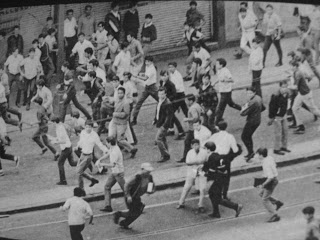





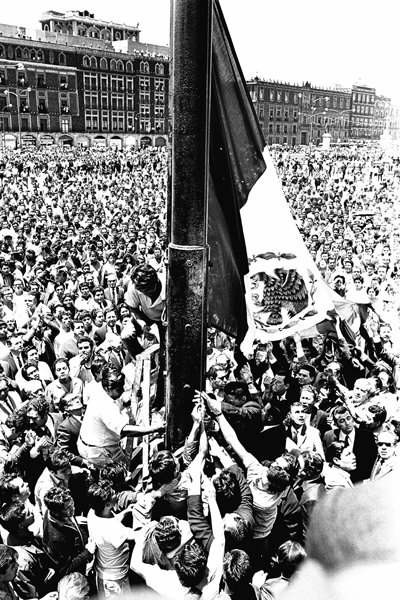


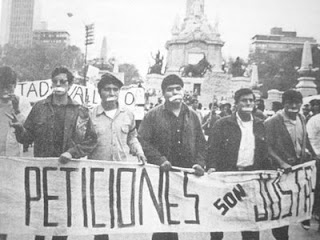




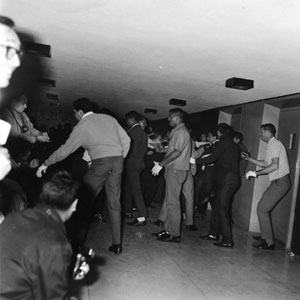


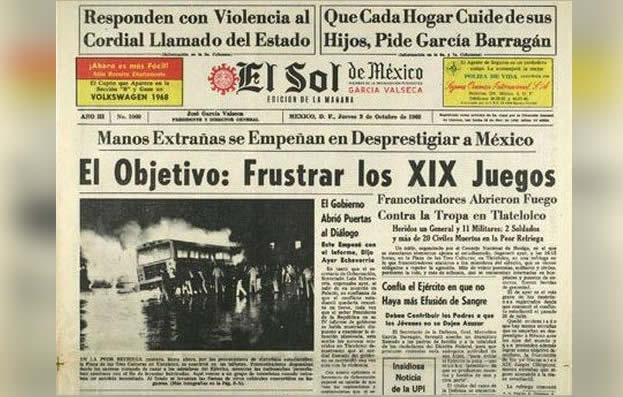
Even if you have a business that is trustworthy and reputable, you might face problem
in being able to find potential buyers. s not that you will always attain success, many a times you may fail but you should keep
yourself going and in the end you surely will be benefitted by it.
Business loans tend to carry a high rate of interest.